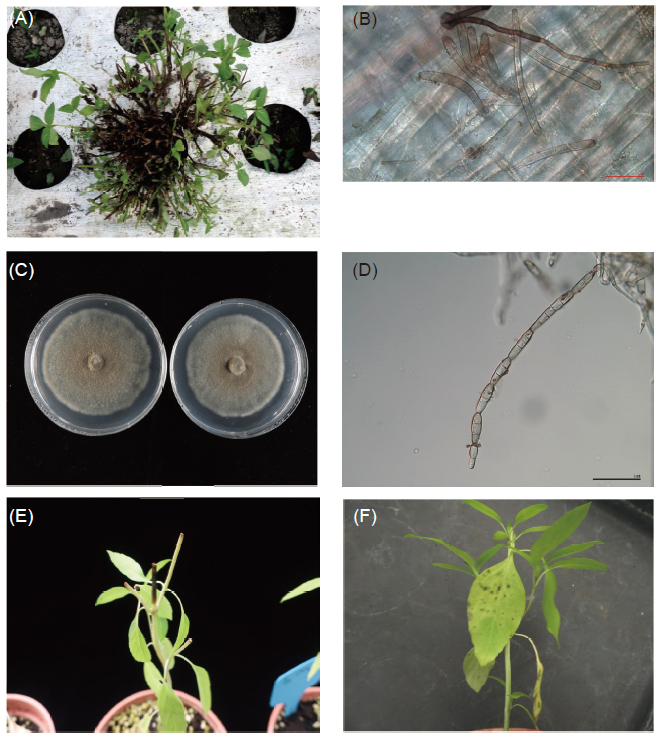All issues

Author:Jia-Rong Tang*, Shu-Fen Tsai, Szu-Yu Chen, and I-Sheng Feng
Abstract:
Basil (Ocimum basilicum L.) is a perennial herb belonging to the family lamiaceae, and is commonly cultivated as a condiment or spice in Taiwan. A symptom of dieback appeared on basil planted in the field and greenhouse at Wandan Township, Pingtung Country, and Luzhu Township, Kaohsiung City, Taiwan, during September 2019 to March 2020. The dark brown lesion initiated from the cutting ends made by the regular harvest, then extended progressively, and eventually resulted in the dieback of the branches and defoliation. Conidiophores and conidia characteristics of Corynespora cassiicola were observed from diseased tissues. Margin of lesion was excised and sterilized. Hyphae, once emerged from the plant tissue, were transferred from water agar, subcultured on potato dextrose agar (PDA) plates, and incubated at room temperature. The colonies on PDA were white to pale gray in color and dark olive green in the center area. After 25 days incubation, conidia characteristics of C. cassiicola were observed at middle of the colony. Genomic DNA was extracted from pure cultures. The internal transcribed spacer (ITS) DNA fragment was amplified by PCR with primer pairs: CoryITS-f1 and CoryITS-r1, and sequenced. ITS sequence was blasted with GenBank on National Center for Biotechnology Information (NCBI). Blast analysis showed that CC-2 and CC-3 had 100% identity to C. cassiicola. Necrosis or dieback appeared at seventh day on some inoculated basils, with disease severity being 75% at 25℃, while 16.67% at 20℃ and 30℃. C. cassiicola was reisolated from the lesions, thus fulfilling Koch’s postulate. The results suggested that the optimal condition for C. cassiicola to cause dieback of basil was at 25℃ in high humidity. Fungicides, which recommended on control of leaf spot caused by Alternaria alternata were tested and revealed that iprodione effectively inhibited mycelial growth of C. cassiicola.
Key words:Basil, Dieback, Corynespora cassiicola
Download:![]() PDF Links
PDF Links
- 1. Development of Tractor-Mounted Seedling Transplanter for Sweet Potato
- 2. Synergistic Effect of Additional Gas on the Toxicity of Phosphine to Sitophilus oryzae and Sitophilus zeamais (Coleoptera: Dryophthoridae)
- 3. Effects of Temperature and Solar Radiation on Growth Traits and Plant Elements in Purple Leafy Sweet Potato
 Submit your manuscript
Submit your manuscript
 Guide for authors
Guide for authors